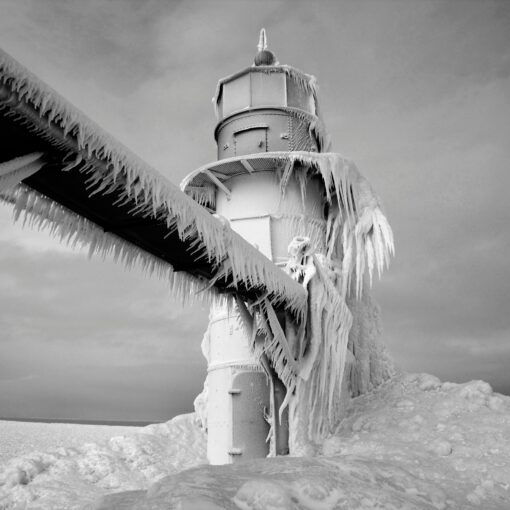It is a basic principle of administrative law that, even after a jurisdiction enacts legislation, full implementation of the law typically depends on regulatory and other actions by executive branch agencies. This is particularly true in the context of environmental and climate change legislation, which are often especially complex and generally demand considerable administrative and technical expertise. Moreover, litigation, political circumstances, or other challenges may evolve over time and impact the Executive’s ability to fully implement the law. In other words, enactment of a law does not automatically equate to successful implementation.
One illustration of this dynamic is New York State’s climate law – the Climate Leadership and Community Protection Act(CLCPA or Act). In the last several weeks, New York State has taken major steps back from fully implementing the CLCPA. First, the State continued to defend its decision to not release overdue greenhouse gas (GHG) emission regulations (i.e., the cap-and-invest program), even after losing a decision in court that ordered the release of such regulations. Second, following public pressure from President Trump and Governor Hochul’s support for an “all-of-the-above” energy strategy, the New York State Department of Environmental Conservation (DEC) approved a water quality permit for an interstate natural gas pipeline that it previously denied. Third, after previously denying a cryptocurrency mining facility an air permit based on inconsistency with the CLCPA, DEC finalized a settlement with the facility that allows it to continue operating into the next decade. Finally, in federal litigation challenging the All-Electric Buildings Act, the State stipulated to delay its operation pending the outcome of the litigation.
The State’s actions – coming amid concerns about affordability and unprecedented legal attacks from the federal government – seemingly represent a sharp change in direction from its previous leadership on climate change. In reversing course in some areas and delaying action in others, the State is postponing full implementation of the CLCPA, and putting its prior commitment to meet the mandates of the Act in question.
This blog post provides a brief refresher on certain major provisions of the CLCPA and analyzes the four recent actions discussed above within the context of these requirements. It concludes by recognizing how a law’s implementation is generally even more difficult than its passage, noting that the Model Climate Laws Initiative is one resource available for states and local governments that supports both passage and implementation.
CLCPA’s Major Provisions
The heart of the CLCPA is its emissions reduction mandates which apply to all sectors of the economy and put New York on a path to net zero GHG emissions by 2050. By 2030, the State is required to reduce emissions by 40 percent from 1990 levels. Environmental Conservation Law (ECL) § 75-0107(1). By 2050, the State must reduce its emissions by 85 percent from 1990 levels. Id. As required by statute, DEC promulgated regulations in 2020 to translate these percentage reduction requirements into mass-based GHG limits in tons. See 6 NYCRR Part 496. By January 1, 2024, DEC was required to promulgate regulations to ensure achievement of these mandatory Statewide GHG emission limits. ECL § 75-0109(1). As explained further below, it didn’t meet that deadline.
In addition, the Act contains a number of specific targets for the electricity sector, including that the State must (1) procure at least 70% of electricity from renewable sources by 2030; and (2) install 6,000 megawatts (MW) of distributed solar by 2025 (since raised to a goal of 10,000 MW by 2030) and 3,000 MW of battery storage by 2030 (since doubled to 6,000 MW by 2030). Public Service Law § 66-p. By 2035, the State is required to install offshore wind facilities with a capacity of 9,000 MW, and by 2040, the grid must be powered by electricity produced from 100% zero-emission sources of energy. Id. As of this writing, New York is projected to fulfill (and exceed) only one of these milestones: over 10,000 MW of distributed solar is installed or planned through 2030.
Further, the CLCPA includes a basic analytical framework for State administrative decisions. Under Section 7(2), State agencies cannot take actions that would be inconsistent with or interfere with the State’s ability to meet its GHG reduction mandates, unless the agency provides a detailed justification and identifies alternatives or GHG emission mitigation measures. Under Section 7(3), agencies cannot make decisions that would disproportionately burden disadvantaged communities. Analyses under these sections have, for example, resulted in permit denials for fossil-fuel fired power plants in Astoria, Queens, and in Newburgh, a city in the Hudson Valley. DEC’s authority to deny permits pursuant to Section 7(2) of the CLCPA has been upheld by multiple State courts. See, e.g., Danskammer Energy, LLC v. New York State Department of Environmental Conservation, 76 Misc.3d 196 (Sup. Ct. Orange Co. 2022) and Greenidge Generation v. New York State Department of Environmental Conservation, 223 N.Y.S.3d 846 (Sup Ct. Yates Co. 2024).
New York State Defends Delay of Cap-and-Invest Regulations
The CLCPA required the DEC to finalize regulations to achieve the statewide GHG emission limits by January 1, 2024 (ECL § 75-0109). Pursuant to the Scoping Plan’s recommendation, and following Governor Hochul’s own direction, the agency moved forward with a cap-and-invest program as the key component to ensuring the reduction of statewide GHG emissions. The program was intended to work in conjunction with a variety of other complementary regulations that also reduce emissions. Throughout 2023 and 2024, DEC and the State conducted extensive stakeholder outreach and worked to develop the details of a cap-and-invest program.
Briefly, by way of background, a cap-and-invest programs are a market-based policy mechanism to reduce emissions. The “cap” refers to overall GHG limits that get stricter over time. Emission allowances are issued in an amount up to the cap, and regulated entities must obtain an allowance to cover each ton of their GHG emissions. The “invest” part contemplates that the state initially sells emissions allowances through auction, generating revenue for the state, which is then invested in programs and projects that further reduce emissions. While DEC and the State did substantial work to develop a cap-and-invest program, in the beginning of 2025, the Governor announced that the cap-and-invest program would be put on hold. As a result, DEC did not propose draft cap-and-invest regulations, though it’s been reported that the DEC had drafted them.
In March 2025, Earthjustice, New York Lawyers for the Public Interest, and the Pace Environmental Litigation Clinic filed a petition – on behalf of Citizen Action of New York, PUSH Buffalo, Sierra Club, and WE ACT for Environmental Justice –in New York Supreme Court against the DEC, seeking to compel the agency to “immediately issue draft regulations under ECL § 75-0109 and finalize the regulations on a reasonable timeline, without delay[.]” The State Attorney General defended the agency against the challenge, arguing that an order mandating the DEC to issue the regulations would cause financial hardship across the state. It was undisputed that DEC had not issued regulations complying with the requirements of ECL § 75-0109, with the State effectively conceding this point as part of the litigation.
On October 24, 2025, the Albany County Supreme Court granted the plaintiffs’ petition, based on the clear mandatory language of the Act. Judge Julian Schreibman wrote that the plain language of ECL § 75-0109 created a clear obligation on DEC to promulgate emissions regulations by January 1, 2024. DEC did not argue that it could not issue the regulations, but that, as a matter of policy, it would be “infeasible” due to the cost to consumers. The court ruled the agency does not have the discretionary authority to make this judgment, because the legislature has already decided the CLCPA’s emissions reductions “shall” be achieved and the DEC must promulgate to “ensure” such limits are met. The court ordered DEC to issue regulations by February 6, 2026.
In response to the court decision, Governor Hochul made clear that she does not intend to issue cap-and-invest regulations in compliance with the court order. Instead, she has publicly voiced her disagreement with the decision. The Governor indicated that the State would appeal the decision and, at the same time, work with the State legislature to potentially amend the CLCPA and DEC’s obligations under the law. An appeal would result in a stay of the court order, possibly delaying further regulatory action to implement the Act’s requirements until after the gubernatorial election.
DEC Approves the Northeast Supply Enhancement (NESE) Pipeline’s Water Quality Permit
In 2019 and 2020, the DEC denied water quality certifications (WQCs) for the NESE pipeline, a 23.5 mile pipeline (17.4 of which would be in New York State waters) proposed by the fossil fuel company Williams. The pipeline would transport natural gas from the Marcellus Shale region in Pennsylvania to Queens, New York. To reach New York, the pipeline would run under the seafloor from New Jersey to just south of the Rockaways, where it would connect with an existing pipeline to bring natural gas north to National Grid customers in Brooklyn, Queens, and Long Island.
The DEC denied the WQC in 2020 because Williams could not “demonstrate compliance with all applicable water quality standards” (6 NYCRR § 608.9), determining that the underwater portion of NESE would have adverse water quality impacts, especially from resuspension of sediment and contaminants, including mercury and copper, and intrusion into sensitive habitats and a critical resource area. While not the legal basis for the WQC denial in 2020, DEC’s denial also found that the pipeline’s GHG emissions and climate impacts would be significant, stating that “the continued long-term use of fossil fuels is inconsistent with [New York’s] laws and objectives and with the actions necessary to prevent the most severe impacts from climate change.”
In May 2025, Williams resubmitted its application for a WQC, shortly after President Trump took office and applied public pressure to Governor Hochul to approve previously denied natural gas pipelines. In relatively short order, DECapproved the pipeline’s WQC application, albeit with conditions. Among other things, there are requirements for third-party monitoring of the pipeline’s construction and actions to mitigate impacts to critical resources, avoid sediment disturbance, and prevent water contamination.
In its response to public comments and in a cover letter for the permit issuance, DEC conceded that the pipeline is inconsistent with the CLCPA’s GHG emissions limits because “it will result in emissions that would increase atmospheric concentration of GHGs and contribute to future climate change impacts.” Notwithstanding the climate impacts, DEC pointed to findings made by New York’s Public Service Commission and the Federal Energy Regulatory Commission(FERC) that the pipeline would improve the reliability and resilience of New York’s gas system, especially during high demand or supply disruptions, to justify the project’s contravention of CLCPA § 7(2).
Shortly after DEC issued the WQC for the NESE pipeline, a coalition of environmental groups brought suit in the Second Circuit challenging DEC’s decision.
Governor Hochul and DEC Settle with Crypto Mining Facility Greenidge Generation
Greenidge Generation, located on Seneca Lake in the Town of Torrey, New York, is a natural gas-fired power plant with a 107 MW capacity. It received a Title V Air Operating permit from the DEC in 2016, on the basis that it would primarily operate as a “peaker plant” (i.e., a power plant that provides a limited amount of electricity at certain times of high demand). Greenidge did not indicate at the time that it intended to generate energy for behind-the-meter cryptocurrency mining, but it began doing precisely that in in 2020, causing its emissions to triple that year and quadruple in 2021. DEC later projected that that emissions from the cryptocurrency operation would increase almost sixfold in 2022. The facility’s increase in energy demand due to the proliferation of its crypto mining operations was met exclusively by fossil fuel combustion.
Greenidge applied for a permit renewal in March 2021, before its permit term was set to expire on September 6, 2021. In June 2022, the DEC denied the facility’s Title V air permit renewal because it would be inconsistent with, or would interfere with, the state’s attainment of the CLCPA’s emissions limits, and Greenidge failed to provide a reliability justification or GHG mitigation measures that would justify or cure the inconsistency. The DEC explained that the “[c]ontinued operation of a natural gas-fired power plant primarily to serve Greenidge’s own [] cryptocurrency mining operations would accomplish the exact opposite” of what is needed to achieve the state’s climate and energy requirements and “help to perpetuate a reliance on fossil fuels.”
Subsequently, Greenidge challenged the DEC’s permit denial, alleging that DEC’s interpretation of the CLCPA would permit the agency “to function as New York State’s de facto climate czar, determining on an ad hoc subjective basis what facilities should be permitted to operate or be shut down on climate change considerations alone.” A November 2024 New York State Supreme Court ruling affirmed DEC’s authority under Section 7(2) of the CLCPA to deny a permit application, including the Title V renewal permit, but nevertheless allowed Greenidge to present additional evidence before an administrative law judge.
The DEC announced in November 2025 that it had reached a settlement agreement with the crypto mining company. In exchange for DEC granting its permit renewal application, Greenidge must reduce its GHG emissions in two ways. First, the permit will reduce the facility’s allowable emissions by 25% (from 641,878 tons per year of carbon dioxide equivalents (CO2e) to 475,683 tons per year of CO2e). By the fifth year of the permit, allowable facility emissions will be capped at 358,071 tons per year of CO2e, a 44% reduction in permitted emissions and a 25% reduction in actual GHG emissions at that facility as compared to current actual emissions.
According to the DEC, the settlement renders moot the CLCPA § 7(2) basis for denying the permit renewal. This agreement means that Greenidge can continue crypto mining operations into 2030—the year New York is supposed to have reduced its emissions by 40%, have its grid running on 70% renewables, and deployed distributed solar and battery storage with a combined capacity of at least 16,000 MW.
Governor Hochul Delays the All-Electric Buildings Act
The 2023 All-Electric Buildings Act was enacted to support New York’s climate goals by reducing emissions in new buildings. It required the State Fire Prevention and Building Code Council to promulgate rules amending the state building code to prohibit the installation of fossil fuel equipment in new construction. In July 2025, the Code Council voted unanimously to approve the amendments. The vote came two days after a federal district court upheld the state’s authority to implement the law in Mulhern Gas Co. v. Mosley, 1:23-cv-01267 (N.D.N.Y), rejecting a claim that the federal Energy Policy and Conservation Act (EPCA) preempts the statute’s prohibition on fossil fuel equipment in new buildings. Although the plaintiffs appealed the district court’s decision to the Second Circuit Court of Appeals, the new rules were still set to go into effect on January 1, 2026.
In October, the Second Circuit issued an order stating that the Mulhern Gas appeal would be heard in tandem with Association of Building Contractors of the City of New York, Inc. v. City of New York, No. 25-977 (2d Cir.), an EPCA preemption suit challenging New York City’s Local Law 154, which sets indoor air emissions limits for fossil fuel combustion in most new construction. Both cases received favorable decisions at the district court level, and leading up to the briefing deadlines, there was no reason to think that the Second Circuit would reverse both lower court holdings that EPCA does not preempt the laws. The lower courts viewed both building electrification laws as outside the purview of EPCA’s preemption provision because they do not regulate the “energy use” of appliances subject to EPCA. The courts’ reasoning is consistent with the dissent in California Restaurant Association v. City of Berkeley from a Ninth Circuit decision holding EPCA preempted a Berkeley ordinance that prohibited natural gas piping in new construction.
Despite cautious optimism about the outcome of the case on appeal, last week Governor Kathy Hochul decided to delaythe implementation of the All-Electric Buildings Act, apparently due to concerns about its affordability and reliability impact on the electricity grid. In a stipulation filed in the federal district court, the State agreed to suspend the law during the pendency of the appeal and for 120 days after the Second Circuit’s final decision, unless either party petitions the United States Supreme Court for review. In return, the plaintiffs agreed to withdraw their motion in the district court for an injunction pending appeal and not to seek an injunction in the Second Circuit.
By delaying implementation, the State will enable additional new fossil fuel infrastructure and lock in the emissions that come with it for years. According to DEC’s annual Statewide GHG Emissions Report, issued pursuant to the CLCPA, the building sector is the State’s largest contributor to GHG emissions. As such, the CLCPA Scoping Plan, issued by the Climate Action Council in 2022, recommended that the State adopt zero-emissions standards for new buildings. Implementation of the All-Electric Buildings Act is thus a key part of the State’s actions to meet the CLCPA’s GHG emission reduction mandates.
Conclusions
These four recent actions bring into question New York’s ongoing commitment to full implementation of the CLCPA. They are illustrative of the importance of the administrative process in the effectiveness of climate change laws. Passing a nation-leading piece of climate legislation – a description that remains true of the CLCPA – is only the first step. After a law is passed, the executive branch and its agencies must remain committed through often controversial regulations, permitting, and other actions.
Fortunately, tools are available to help ensure that good laws are not just passed, but effectively implemented. For example, the Model Climate Laws Initiative – a joint project of the Sabin Center and Environmental Advocates NY – provides template legislation, legal analysis, implementation support, and other legal tools for state and local governments working to advance action on climate change. The Initiative drafts model laws with a focus on ensuring they are able to withstand legal challenge and contemplate the subsequent rulemaking process. By setting agencies up for success as much as possible through the bill drafting, the goal is to make sure that more climate laws are not just passed, but effectively implemented.





